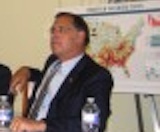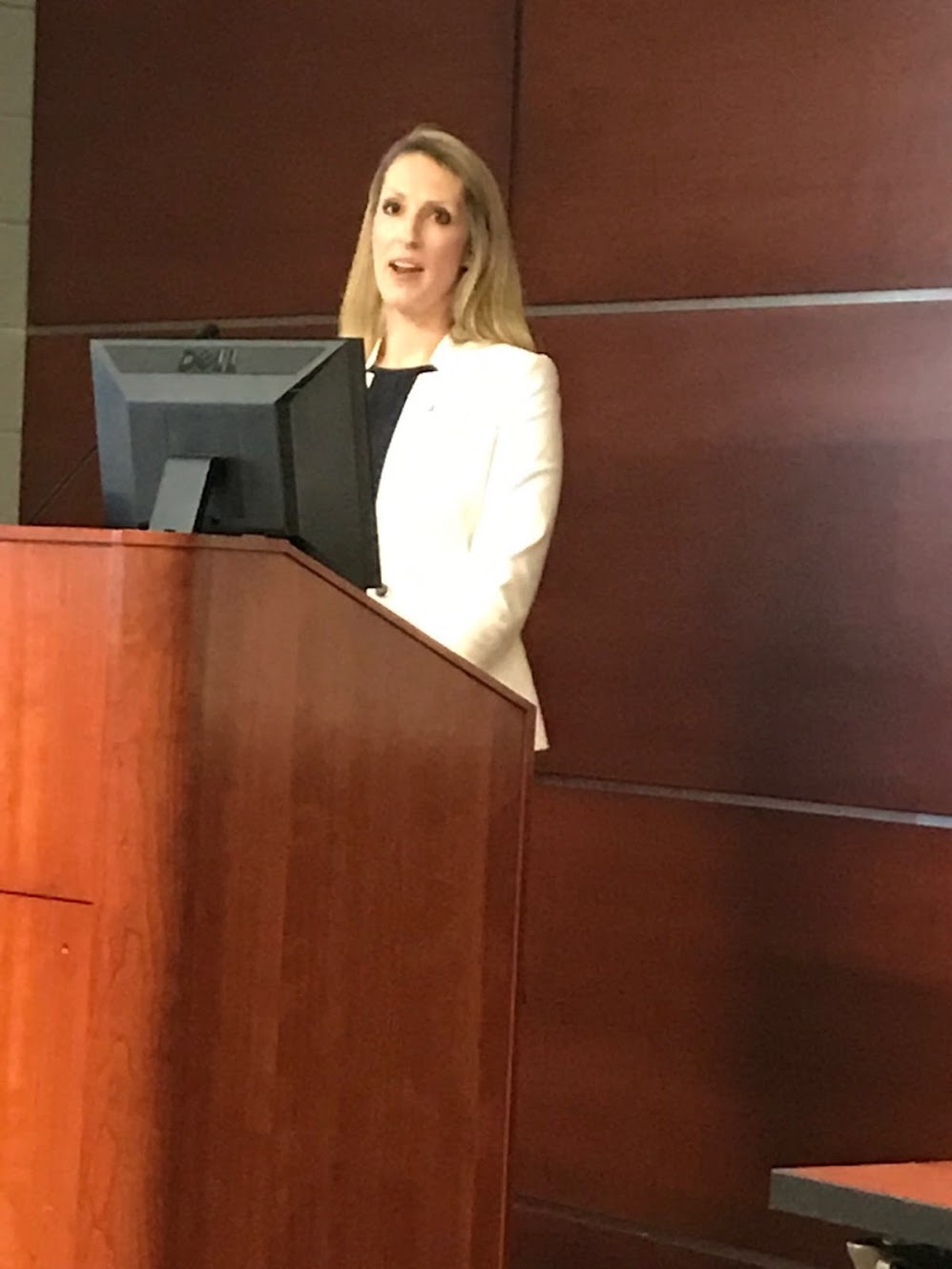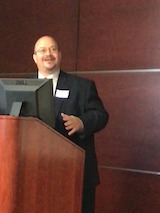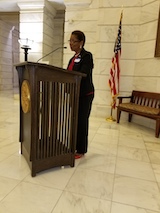Economic Equality Caucus
which advocates for economic equality across the USA.
| Home | Organizational Structure | State Coordinators | Executive Director | Caucus Articles | Memberships | |||||
| "Delta Vision, Delta Voices" | ||||||||||
|
Help Advocate for Economic Progress and Equality. Donate to the Delta Caucus/Economic Equality Caucus. |
||||||||||
Delta Grassroots Caucus Events

Credit Michael Hibblen/ KUAR News, Arkansas Public Radio; Former President Bill Clinton speaking to the Delta Grassroots Caucus on May 2, 2013, at the University of Arkansas Clinton School of Public Service, Little Rock

U. S. Senator John Boozman, Arkansas, at a Delta Grassroots Caucus meeting at the US Capitol

Brad Cole, Executive Director of the Municipal League of Illinois; previously a senior aide to former Republican US Sen. Mark Kirk of Illinois, earlier Mayor of Carbondale, Illinois, veteran Delta regional advocate, speaking at the Delta regional conference in West Memphis, Arkansas on April 26, 2019.

President Bill Clinton makes a comment to Delta Caucus Director Lee Powell at a meeting in Blytheville, Arkansas (in the northeast Arkansas Delta) on Nov. 2, 2014

The Delta Caucus would like to pay tribute to the late, great U.S. Sen. Thad Cochran of Mississippi, a powerful force in the US Senate for decades and a champion for the Delta. Sen. Cochran passed away on May 30, 2019. He spoke to the Delta Caucus on many occasions over the years (he is pictured above speaking to a Caucus event on Capitol Hill in Washington, DC) and his thoughtful, courteous and bipartisan leadership will be sorely missed.

Marcie Lawson, Executive Director, Sikeston, Missouri Regional Chamber and Area Economic Development Corporation, speaking at the Delta regional conference in West Memphis, Arkansas on April 26, 2019.

Alan Gumbel, Greater Memphis Alliance for a Competitive Workforce, Memphis, Tennessee, speaking at the Delta regional conference in West Memphis, Arkansas on April 26, 2019.

Mayor Shirley Washington of Pine Bluff, AR, speaking to the Delta Caucus at the Arkansas Capitol Rotunda in 2017.
Arkansas Congressional Delegation Is Right to Support Earmark Funds for Disadvantaged Communities
Posted on July 25, 2023 at 01:37 PM
Arkansas Congressional Delegation Is Right to Support Earmark Funding for Impoverished, Disadvantaged Communities”
The Delta Caucus would like to commend US Sen. John Boozman, US Rep. Rick Crawford, US Rep. Bruce Westerman and the Arkansas Congressional delegation for supporting earmark funding for the most needy and disadvantaged communities in Arkansas. The Congressional officials consult regularly with state and local officials to stay on top of which projects are most deserving of support.
The article below in this email from the Arkansas Democrat-Gazette, the Washington Post and wire reports has things exactly backwards, saying that the process of earmarking in which Members of Congress can direct funding to the most impoverished and needy areas in fact does the exact opposite of that, and leads to more spending for the richest areas. The article is flatly erroneous.
In my experience in Congress years ago, US Rep. Bill Alexander, US Sen. Dale Bumpers and other members of the Arkansas Congressional delegation diligently directed funding to projects with the most serious needs.
Today’s Arkansas Congressional delegation including US Sen. John Boozman, US Rep. Rick Crawford, and US Rep. Bruce Westerman similarly support the earmark process because it enables the elected representatives of the people prioritize the most important projects, rather than relying on unelected bureaucrats to make those decisions.
In our view, Boozman and Westerman correctly emphasized that they gather feedback from local communities and state agencies to fund vital projects that merit federal investment, rather than leaving the decision to Washington bureaucrats.
This emphasis on prioritizing local knowledge puts the funding where it is most needed and assures that smaller, rural communities don’t miss out on funding simply because they don’t have the same resources as larger, more urban communities.
Some of the specific comments in the Washington Post analysis actually contradict their view of earmarks. For example, the Post reported that 84.5% of water-related earmarks from the Arkansas congressional delegation went toward improving services in communities that the Biden administration considers disadvantaged. In Arkansas’ case, clearly the great majority of the funding did go to disadvantaged communities.
The article reflected a bias in some of the statements, such as describing earmakrs in federal water funds as “political pet projects.” It then proceeds to allege that this leads to “cutting at times into money that could have been made available to poorer, needier communities;” this statement contradicts the Post’s other comment that 84.5% of the funding in Arkansas did go to disadvantaged communities.
There is an unfortunate history of ill-informed media reports portraying earmarks as corrupt, wasteful projects, when in fact they promote the democratic process by increasing the input of state and local sources to their district and state’s elected Congressional representatives. There likely have been a small number of ill-advised usages but any huge program will have a few exceptions to the rule; by and large, the majority of earmarks channel funds to the local areas and projects that need them most.
Some poorly informed people think this makes a great story that “Gee, look how corrupt and wasteful these politicians are.” This argument is just dead wrong. For the most part earmarks are examples of pinpointed, constructive funding.
Thanks—Lee Powell, Director, Delta Grassroots Caucus (202) 360-6347 ​
Here is the article about earmarks–draw your own conclusions.
Earmarks in Congress redirect water funding
COMPILED BY DEMOCRAT-GAZETTE STAFF FROM WIRE REPORTS
Members of Congress have redirected roughly $2.3 billion in federal water funds toward political pet projects over the past two years, cutting at times into the money that could have been made available for poorer, needier communities. As a result, 38 states and territories have been shortchanged about $660 million in federal water aid, according to data obtained and analyzed by The Washington Post. The problem is expected to worsen in the coming fiscal year, as House Republicans eye a $1.7 billion cut to the overall funding that Washington sends states for their water needs.
That could complicate a new national push to replace lead pipes, repair wastewater facilities and improve other aging infrastructure — an urgent task at a moment when the United States is grappling with extreme heat and other consequences of a fast-warming planet.
Every year, Congress appropriates money for two key federal water funds that are overseen by the Environmental Protection Agency, which then distributes grants to states. Since 2022, the federal allocation has totaled roughly $5.5 billion, amounting to a literal and figurative drop in the bucket for a nation with an estimated $625 billion backlog in projects to provide cleaner, reliable drinking water.
Before states receive any money, however, members of Congress can skim off the top of the funds. Using a legislative tool known as earmarks, lawmakers can reserve federal water aid for specific projects in their home communities. Only after that does Washington divvy up and distribute a smaller pool of remaining cash among the states. In some parts of the country, the result is a net cut in funding — creating, in effect, a system of water winners and losers.
In Illinois, for example, earmarks last year shortchanged the state $14.7 million in federal aid to improve clean water systems, according to state data and records compiled by the Council of Infrastructure Financing Authorities, known as CIFA, which represents local officials. Illinois has some of the greatest water needs in the country, including the second-most lead pipes in the United States, a recent federal analysis shows.
The flood of congressional requests also siphoned away critical water money from Puerto Rico as the U.S. territory continued to rebuild from the devastation of Hurricane Fiona in 2022. Over the past two fiscal years, Puerto Rico received roughly $26.6 million less than it would have without earmarks, according to CIFA data shared with The Post. The territory — whose officials did not respond to a request for comment — does not have voting representation in Congress.
For now, most states and territories have still been able to finance their water projects, thanks to a bipartisan 2021 infrastructure law that greatly increased federal water spending for five years. Eventually, though, that money will run out — leaving local officials with fewer federal dollars to address infrastructure needs.
The fiscal situation could worsen more rapidly under a bill advanced by House Republicans last week: The measure would slash federal water spending by more than half and reserve nearly every dollar remaining for earmarks — creating a combination of fiscal constraints next year that state officials have described as devastating.
States “are worried about this trend, the direction that it’s going,” said Gary Bingenheimer, a top official at the Illinois Environmental Protection Agency. “But if it continues, and our grants continue to be reduced, and the bipartisan infrastructure law money ends, then what do we do?”
IN ARKANSAS
According to The Washington Post analysis, 84.5% of water-related earmarks from the Arkansas congressional delegation went toward improving services in communities that the Biden administration considers disadvantaged.
Congressman Womack stated that “The assertion that water projects were short-changed because of community projects is a flawed argument. Member-directed spending is much more targeted and efficient than allowing unelected bureaucrats to make all the decisions.”
For many Americans, the nation’s water needs are laid bare in its harrowing past tales of failures — from the lead contamination that long has plagued Flint, Mich., to the recent images of brown liquid flowing from spigots in cities like Jackson, Miss. The stories share a theme of persistent neglect, exacerbated in a country that only recently has grappled with economic shortcomings that trace along race and class lines.
After decades of underinvestment, Congress in 2021 offered a massive financial reprieve: Democrats and Republicans approved roughly $55 billion to improve water access, supply and treatment as part of a sprawling infrastructure package signed into law by President Joe Biden. The measure channeled most of that money through two federal programs that annually write checks to states — one focused on drinking water, the other focused on clean water, which includes wastewater systems.
Yet the burst of one-time funding — on top of other state and federal spending — still fell far short of the country’s estimated needs. The infrastructure law included about $15 billion specifically to replace lead pipes, for example, though analyses from groups including the Brookings Institution suggest it could cost three times as much to solve the problem.
“There continues to be a huge gap between the funding and the need,” said Jeffrey Diehl, chief executive of the Rhode Island Infrastructure Bank.
The result is a vast and growing water spending gap, one that has created a yearly competition among lawmakers for still-scarce funds.
Since 2022, California has reaped a windfall in federal water spending: The state’s two Democratic senators — Dianne Feinstein and Alex Padilla — last year helped secure more than $32 million in water-related earmarks, according to a Post analysis of spending data. In total, those and other earmarks helped the state obtain roughly $43 million more than it would have if lawmakers had not intervened last year, an analysis from CIFA shows.
Diana Marin, a spokeswoman for Padilla, said in a statement that the earmarks reflected the senator’s ongoing work “to address decades of underinvestment and the needs of the 40 million Californians he represents — including nearly one million who are without access to safe drinking water.” Nationally, lawmakers secured more than $1.4 billion in clean and drinking water earmarks in the most recent fiscal year, nearly double the amount in 2022. But for every state that saw significant funding gains, others experienced surprising losses.
In Colorado, the first sign of trouble surfaced in 2022: Keith McLaughlin, executive director of the Colorado Water Resources and Power Development Authority, said he “came close to running out of loan money” to fund projects. In that first year Congress allowed earmarks, the state’s delegation did not take home enough aid to make up for what Colorado lost to other states, putting local officials in a place where “we almost had more requests than we had dollars available,” according to McLaughlin.
The state’s shortfall ultimately totaled around $20 million, he said. While its immediate effects may have been blunted by one-time aid under the infrastructure law, McLaughlin added that Colorado could be in dire financial straits if the trend continues at its current pace.
“There are more projects than we can fund,” he said. “We’re within a year or two of running out of loan funds. That is an issue.” Over the past two fiscal years, Pennsylvania similarly received about $36 million less than it would have received if lawmakers had not allowed earmarks. For Indiana, the cut totaled roughly $45 million; in Texas, the reduction exceeded $65 million. Each of the states declined or did not respond to requests for comment.
For some states, though, the headaches have been more than financial in nature: The congressional earmarks appear to benefit wealthy communities over needier ones, raising the specter that the process could be worsening the country’s racial and economic divides.
In states such as Maryland, Massachusetts and Virginia, fewer than 20% of congressional water earmarks in the 2023 fiscal year went to communities that are considered disadvantaged, according to an analysis circulated within the Biden administration and later obtained by The Post. Members of Congress decided where to send those dollars, not state officials, who might have directed them to areas in greater need.
The unpublished federal study aimed to explore whether earmarks had comported with an executive order signed by Biden in 2021 that aims to deliver 40% of all federal benefit programs to cities and towns in greatest need. In total, it found that earmarks in 18 states last year failed to meet that benchmark, depriving disadvantaged communities of an estimated $79 million in water aid.
Back to the top